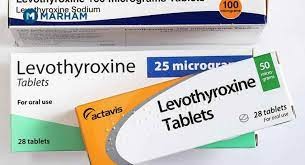What are the priorites of our care and teaching ifor the patient with reflux? (Select All that Apply.)
Preventing further Urinary Tract Infections
Preventing kidney damage
The chances of needing brain surgery
Antibiotic usage teaching with the presence of an infection
Correct Answer : A,B,D
A) Preventing further Urinary Tract Infections:
This is a relevant priority for patients with reflux. Vesicoureteral reflux (VUR) is a condition where urine flows backward from the bladder into the ureters and sometimes to the kidneys, increasing the risk of urinary tract infections (UTIs). Preventing UTIs is important because recurring infections can lead to more severe kidney problems and complications. Teaching patients and caregivers about hygiene, proper voiding techniques, and recognizing UTI symptoms is crucial to minimize the risk of infections.
B) Preventing kidney damage:
Preventing kidney damage is a significant priority for patients with reflux. If urine refluxes back into the kidneys, it can lead to kidney damage over time. This damage can affect kidney function and potentially lead to chronic kidney disease. Monitoring kidney function, managing UTIs promptly, and considering medical or surgical interventions to correct reflux are all important strategies to prevent kidney damage.
C) The chances of needing brain surgery:
The chances of needing brain surgery are not directly related to reflux. Reflux primarily involves the urinary system, specifically the flow of urine from the bladder to the kidneys. Brain surgery is not a relevant consideration in the context of reflux or its management.
D) Antibiotic usage teaching with the presence of an infection:
This is an important aspect of care for patients with reflux who develop urinary tract infections. UTIs are common complications of reflux, and appropriate use of antibiotics is crucial to treat infections effectively and prevent further complications. Teaching patients and caregivers about the importance of completing prescribed antibiotic courses, recognizing signs of infection, and adhering to medical advice is essential to manage UTIs in the presence of reflux.
Nursing Test Bank
Naxlex Comprehensive Predictor Exams
Related Questions
Correct Answer is B
Explanation
A) Low-protein, low-potassium diet:
While low-protein and low-potassium diets can be appropriate for certain kidney conditions, such as chronic kidney disease, they are not typically the primary focus in the acute phase of glomerulonephritis. Protein restriction might be considered if there is significant kidney damage, and potassium levels are elevated.
B) Low-sodium fluid-restricted diet:
This is the most appropriate option. In acute glomerulonephritis, the kidneys' ability to regulate sodium and fluid balance may be impaired due to inflammation and decreased glomerular filtration. Fluid retention and peripheral edema are common. A low-sodium diet helps reduce fluid retention and manage edema.
C) Low carbohydrate, low-protein diet:
Low-carbohydrate and low-protein diets are not the main dietary considerations for acute glomerulonephritis. The primary focus is on managing sodium and fluid intake due to impaired kidney function.
D) Regular diet, no added salt:
A regular diet without added salt might exacerbate the fluid retention and edema associated with acute glomerulonephritis. Sodium intake needs to be controlled to prevent further fluid buildup.
Correct Answer is A
Explanation
A. Levothyroxine
Correct Answer: Levothyroxine should be administered before breakfast.
Explanation: Levothyroxine is a synthetic thyroid hormone used to treat hypothyroidism. It needs to be taken on an empty stomach, at least 30 minutes before eating, to ensure proper absorption. Food can interfere with its absorption, especially foods containing calcium, iron, and fiber.
B. Digoxin
Incorrect Explanation: Digoxin does not need to be administered before breakfast.
Explanation: Digoxin is a medication used to treat heart conditions like congestive heart failure and atrial fibrillation. It doesn't have specific instructions regarding administration in relation to meals. It's important to administer digoxin consistently at the same time every day, but it doesn't need to be taken specifically before or after breakfast.
C. Divalproex
Incorrect Explanation: Divalproex does not need to be administered before breakfast.
Explanation: Divalproex is used to treat conditions like epilepsy and bipolar disorder. It can be taken with or without food. While taking it with food might reduce the likelihood of stomach upset, there's no requirement to take it specifically before breakfast.
D. Mycostatin Mouthwash
Incorrect Explanation: Mycostatin mouthwash is not related to breakfast timing.
Explanation: Mycostatin is an antifungal medication used to treat fungal infections in the mouth (oral thrush). Its administration is not linked to meal times. It's typically swished around in the mouth and then swallowed or spit out, depending on the specific instructions provided by the healthcare provider.

Whether you are a student looking to ace your exams or a practicing nurse seeking to enhance your expertise , our nursing education contents will empower you with the confidence and competence to make a difference in the lives of patients and become a respected leader in the healthcare field.
Visit Naxlex, invest in your future and unlock endless possibilities with our unparalleled nursing education contents today
Report Wrong Answer on the Current Question
Do you disagree with the answer? If yes, what is your expected answer? Explain.
Kindly be descriptive with the issue you are facing.
